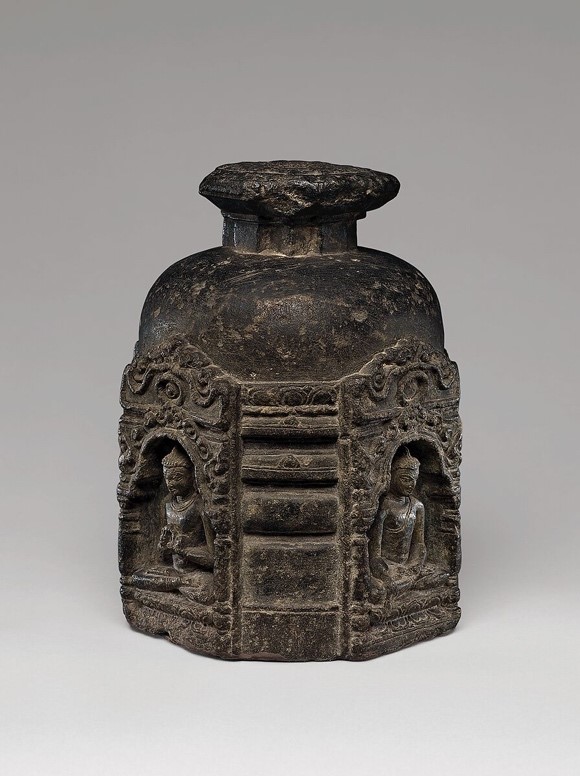Description

Disclaimer: Copyright infringement not intended.
Context: Patna circle of the Archeological Survey of India (ASI) has discovered two 1200-year-old miniature votive stupas during landscaping activities near Sarai Tila mound on the premises of 'Nalanda Mahavihara', a world heritage site in Nalanda district.
Details:
- The stupas, carved from stone, depict Buddha figures.
- These two votive stupas (offered in fulfillment of a vow) were discovered by the ASI officials during landscaping near Sarai Tila mound within the premises of 'Nalanda Mahavihara.
- These, carved from stone depicting Buddha figures, must be around 1200 years old.
.jpeg)
Background:
- Beginning in the 7th century CE in India, small miniature terracotta stupas became popular as votive offerings.
- Devout pilgrims visiting various holy sites and temples throughout Asia would either purchase small votive offerings or make their own.
- The Nalanda Mahavihara site comprises the archaeological remains of a monastic and scholastic institution dating from the 3rd century BCE to the 13th century CE.
- It includes stupas, shrines, viharas (residential and educational buildings) and important artworks in stucco, stone and metal.

Votive Stupa:
- The Sanskrit word stupa signifies “heap, mound, and pile” and is derived from the root ‘stup’ “to pile up.”
- The ashes of Buddha collected were divided into eight parts and stupa was erected on them.
- The legend of relic sharing may has been imagined latter on, after the establishment of relic worship and stupa would have been raised only when the Buddha was considered as a God, a Chakravartin.
- The second, relic sharing was Ashoka’s work. During his reign, “Buddhism spread all parts of India. New monuments were built everywhere. In order to sanctify so many stupas, countless relics are required. In order to distribute the relics to everyone, Ashoka emptied old stupas except the Ramagrama deposit which remained inviolable (sacred)”.
- As his ashes were no longer available, they were replaced by his written law –i.e. factitious body of the Buddha (Niramanakaya), the relic stupas contain the spiritual relics (Dharama Sarira) and the body of law (Dharamakaya) of these represented as Buddha.
- These stupas erected over relics are called Sariraka Stupas.
- Other stupas called Paribhogika were erected over objects used by the Buddha, such as his bowl, girdle, clothes etc. and others called Uddesika(votive) were raised over places which were made famous by the presence of Buddha (Buddha’s presence). These are commemorative stupas.
- Thus, Buddha himself distinguished three kinds of stupa(Chaitya): (i) Sariraka, (ii) Paribhogika and (iii) Uddesika.(according to Mahaparinibbanasutta).
- Beside all these, there are also the sculpted, engraved painted stupas intended to procure merit for the donors. Mostly stupa is containing a relic, that the stupa must have been considered from ancient times as a substitute of the Buddha.
- Other votive stupas within Sarnath Ruins: - After the first sermon by Lord Buddha (628 B.C.) and the establishment of Sangha at Sarnath, this place had became very popular, holiest for the Buddhist and after the death of Buddha (483 B.C.) at Kushinagar, District-Deoria, U.P., Sarnath had also developed as an important Buddhist pilgrimage centre.
- As a result of that for to get universal beneficial joy, the devotees had constructed numbers of votive stupas from time to time within the premises of Sarnath Ruins.
- These votive stupas are situated on three sides of ancient Mulgandh Kuti Vihara (Shrine).

https://timesofindia.indiatimes.com/city/patna/1200-yr-old-miniature-stupas-found-in-nalanda-district/articleshow/96954648.cms















